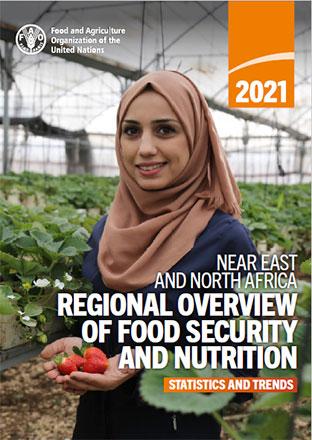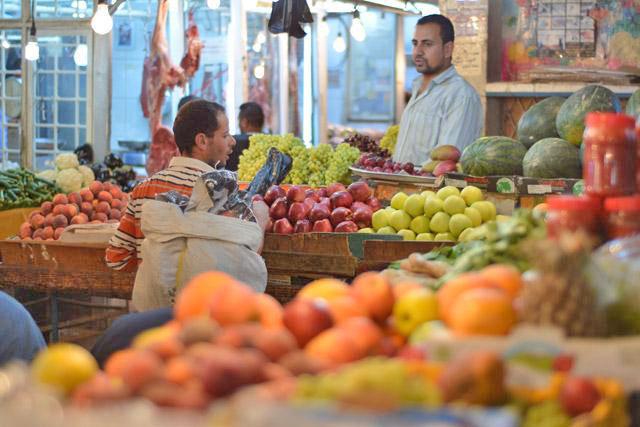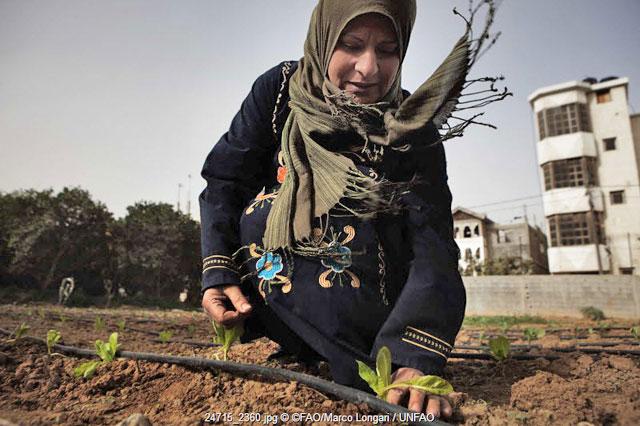You are here
FAO report raises red flag over rising prevalence of obesity in Jordan
By Batool Ghaith - Dec 16,2021 - Last updated at Dec 16,2021

(The cover of the report)
AMMAN — The prevalence of obesity increased the most in Jordan over the last two decades, going from 27 per cent to 35.5 per cent, according to The 2021 Near East and North Africa Regional Overview of Food Security and Nutrition by the Food and Agriculture Organisation of the United Nations.
The report, released on Thursday, indicated that hunger in the Arab region continues to rise, with a 91.1 per cent increase since 2000, as the number of hungry people in the region reached 69 million people in 2020, triggered by protracted crises, social unrests and exposure to multiple shocks and stresses such as conflicts, poverty, inequality, climate change, scarce natural resources and the economic repercussions associated with the recent COVID-19 pandemic.
According to the report, Jordan was ranked among upper-middle-income economies, and the prevalence of stunting among children under the age of five in Jordan is approximately 43 per cent, it was a low public health issue in the Kingdom.
The report noted that a very low prevalence of wasting among children under the age of five was found in Jordan, Palestine and Tunisia.
Overweight rates among children under the age of five increased by 2 per cent in Jordan through the past two decades, as it increased from 5 to 7.1 per cent, the report noted.
Prevalence of anaemia among women of reproductive age (15-49 years) in Jordan increased in the last two decades from 30 per cent to 37.7 per cent, however, it remained a moderate public health problem, according to the report.
The prevalence of obesity increased at different rates in all countries of the region.
Since 2000, the highest increase of 10 per cent has been in Algeria and Jordan, as it increased from 27 to 35.5 per cent, the report showed.
The report indicated that the prevalence of low birth weight in Jordan is 13.8 per cent in Jordan. While undernourishment in Jordan between 2018 and 2020 is 9.5 per cent, and the number of undernourished people (in millions) between 2018-2020 in Jordan is 1.0
Abdulhakim Elwaer, FAO’s assistant director general and regional representative for the Near East and North Africa, noted that conflicts continue to be one of the leading causes of hunger in the region. “Approximately 53.4 million people are facing hunger in countries and areas affected by conflict, which is more than six times higher than in non-conflict countries,” he said in a FAO statement.
"There may be no visible improvement in the situation this year since hunger's primary drivers will continue to drag the situation further down the road," Elwaer added.
“Although there has been some progress in reducing child undernutrition in the past two decades, it still remains a source of concern for policymakers in the region, particularly in low-income countries,” Elwaer highlighted.
“Childhood overweight remains a high public health problem in the region, exceeding the global average of 5.7 per cent and reaching 10.7 in our region,” he added.
The 2021 Near East and North Africa Regional Overview of Food Security and Nutrition warns that even before the COVID-19 pandemic, the Arab region was not on track to meet its goals for hunger and nutrition-related Sustainable Development Goal targets.
The impact of COVID-19 pandemic has not yet been fully reflected on nutrition indicators, but the worsening food security situation suggests that more people are having trouble getting a healthy diet, which will influence their nutrition status adversely, the report said.
The report also encourages laying out the foundations for sustainable agri-food systems, from production to consumption. Sustainable agri-food systems can deliver food security and nutrition for everyone without compromising the earth’s ability to continue producing for future generations and provide year-round access to adequate food and healthy diets for all people, the report observed.
Related Articles
AMMAN — The prevalence of undernourishment (PoU) in Jordan rose sharply following the start of the Syrian crisis, a recent report by the Foo
CAIRO — A third of people in the 420-million-strong Arab world do not have enough to eat, the United Nations said on Thursday, highlighting
The number of undernourished in the Near East and North Africa (NENA) has more than doubled since 1990 standing now at about 33 million peoples, according to the recently released UN Hunger Report.

















